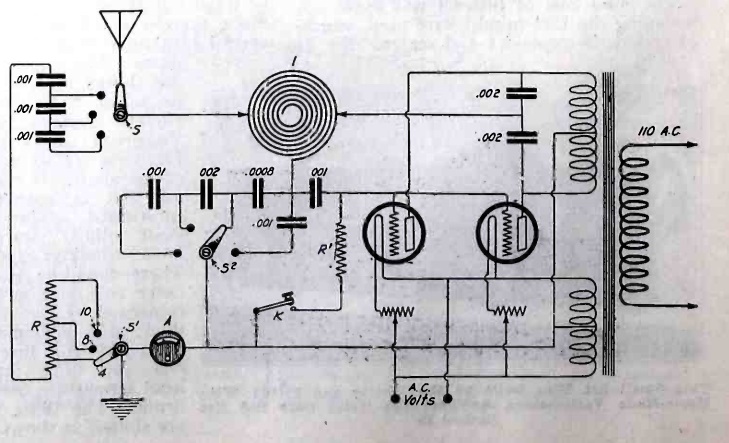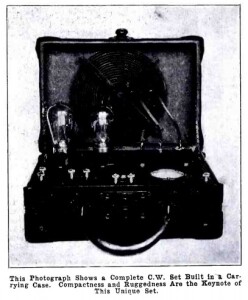 This hundred-year-old circuit, from the March 1921 issue of Radio News, initially had me a little mystified, since the accompanying article describes the set as a “C.W. transmitter.” But I searched in vain for the rectifiers in the power supply and found none.
This hundred-year-old circuit, from the March 1921 issue of Radio News, initially had me a little mystified, since the accompanying article describes the set as a “C.W. transmitter.” But I searched in vain for the rectifiers in the power supply and found none.
The mystery was solved by loyal reader NM0S who pointed out that it’s not exactly a CW transmitter–it’s actually a modulated CW (MCW) transmitter, which puts out a 120 Hz tone. He points out that this is the same type transmitter employed by Art Collins, 9CXX (later W9CXX and then W0CXX), to make contact with an Arctic expedition in 1925. There’s no rectifier because the tubes plates are hooked directly to the AC. As you can see, one tube is hooked to each end of the transformer winding, meaning that each one of them will be “on” for alternating halves of a cycle. As a result, the output will be modulated with a 120 Hz tone, meaning it can be copied with any receiver, even a crystal set.
 The manufacturer of the set is not stated, only that it is an “eastern radio corporation” that had recently entered the market, and had been on display at a recent radio convention at the Hotel Pennsylvania in New York.
The manufacturer of the set is not stated, only that it is an “eastern radio corporation” that had recently entered the market, and had been on display at a recent radio convention at the Hotel Pennsylvania in New York.
The set was designed for operation with two type U.V. 202 tubes, and even though the tubes were rated at five watts each, the set could be run at an overload of 100 percent, for an output of up to 20 watts, at the cost of reduced life of the tubes. The magazine noted that the set would be suitable for places such as summer camps. It reported one notable QSO during the daytime between 1DH in Boston and 1DAC in York Harbor, Maine. This was accomplished with an antenna of only 27 feet, one foot above the roof.
